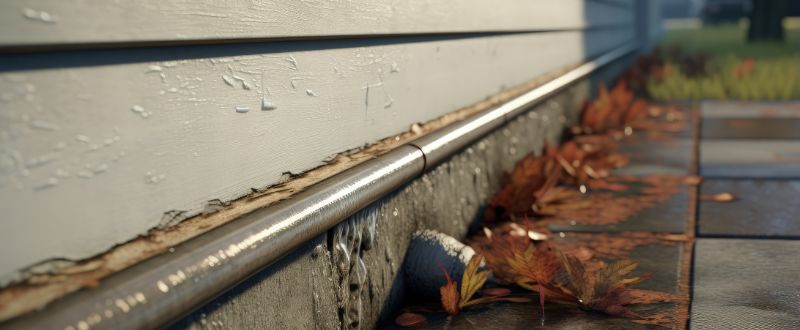Weather conditions can significantly affect a home’s foundation, leading to potential damage and structural issues. Understanding how weather can cause the foundation to break or shift can help you maintain a safe and secure home. Explore the impact of moisture, drought, and freezing temperatures and how the weather affects your home’s foundation.
Effects of Moisture Can Cause Soil Expansion
Prolonged rain or flooding can cause soil expansion and instability. Waterlogged soil becomes loose, which reduces its ability to support the slab. Soil movement can have severe consequences for your home. Foundation heaving happens when the expansive soil begins to push the foundation upward, leading to an uneven and unstable base. Additionally, excessive water can cause the soil to erode, creating subsurface voids that cannot support the foundation’s weight.
Maintaining proper drainage systems helps prevent water accumulation and soil erosion around the foundation. Landscaping, including the strategic planting of trees and shrubs, can also help reduce soil erosion and provide windbreaks during storms.
Drought and Foundation Shrinkage
Another way the weather can affect your home’s foundation is by drying out soil and causing it to shift. During a drought, the soil composition around the foundation changes as the moisture in the soil evaporates, and the soil begins to shrink and contract.
As a result of this soil shrinkage, the foundation can settle because the support from the soil is compromised. The loss of soil support can lead to the foundation dropping unevenly, creating cracks in both the foundation and your home’s walls.
Call a home foundation repair company if you notice uneven flooring or cracks in your home. Trained professionals can identify the cause and offer solutions to solve the problem and prevent it from worsening.
Freezing Temperatures and Frost Heave
Weather can also change how moisture in the soil behaves. When the temperature drops below freezing, water in the soil around the foundation can freeze and expand, causing a process known as frost heave.
Frost heave occurs when the frozen, expanded subsurface soil pushes against your foundation, displacing it and potentially causing cracks and other damage. In some cases, the resulting pressure from frozen soil can lead to foundation movement and destabilization.
Extreme Weather Events
Finally, extreme weather events, such as hurricanes, tornadoes, or earthquakes, can severely impact a home’s foundation. For example, heavy rain from hurricanes can lead to soil erosion, which may weaken the foundation’s support. The potential damage and structural issues that can result from these extreme weather events can undermine the overall safety and value of your home.
Environmental conditions such as excessive moisture, drought, freezing temperatures, and extreme weather events can significantly affect the stability and integrity of your home’s foundation. Taking preventative measures can save you from costly repairs and potential structural damage in the future.

